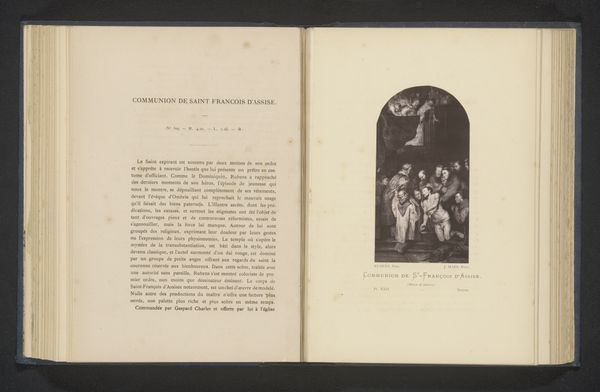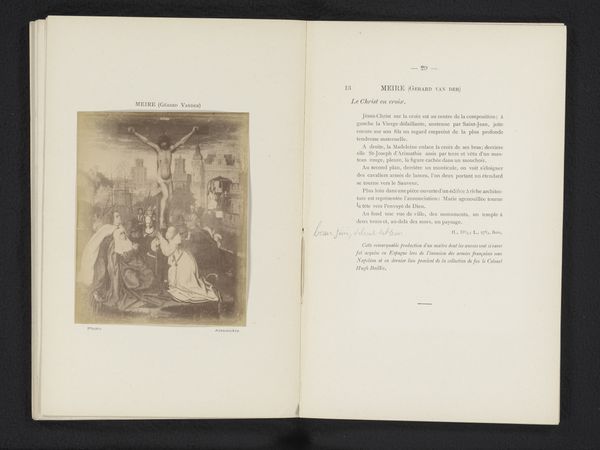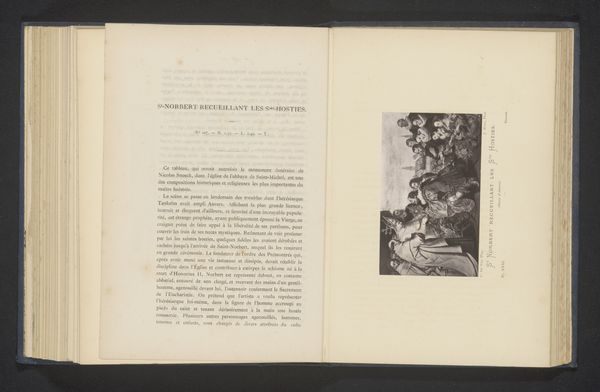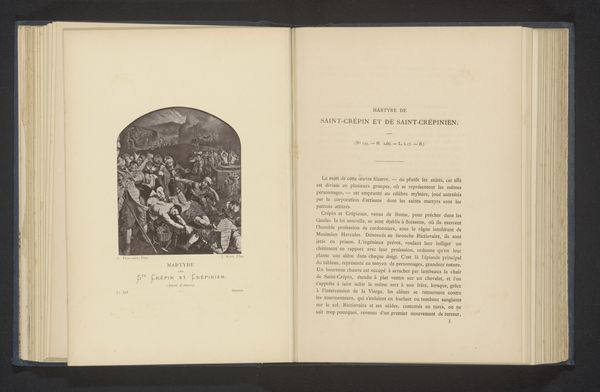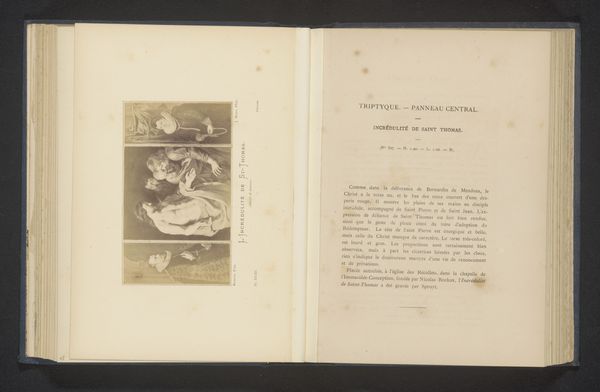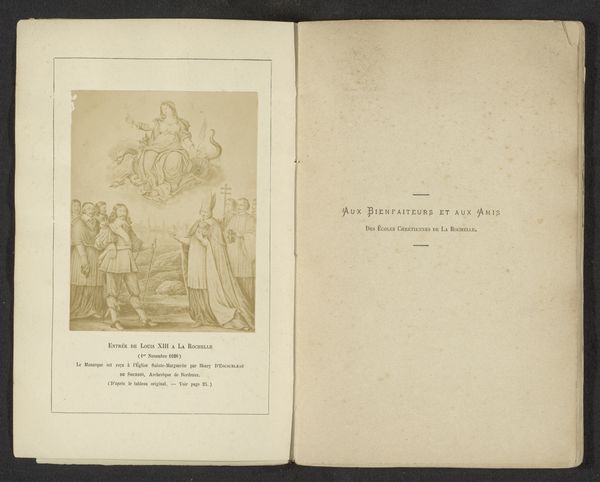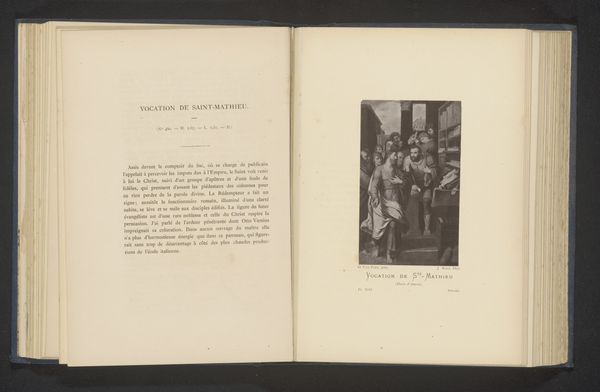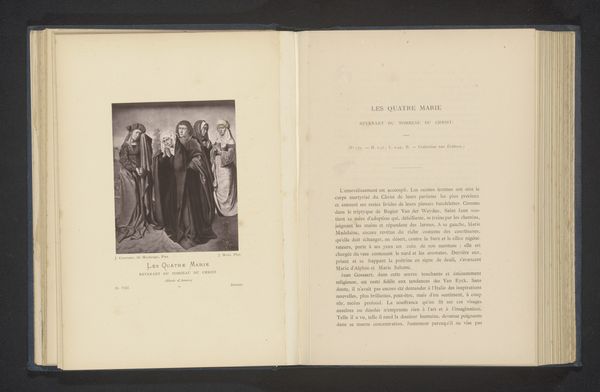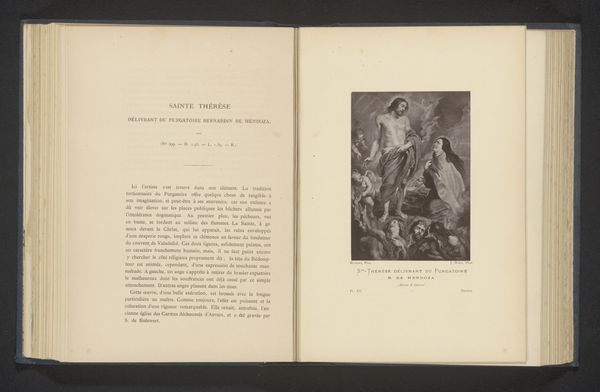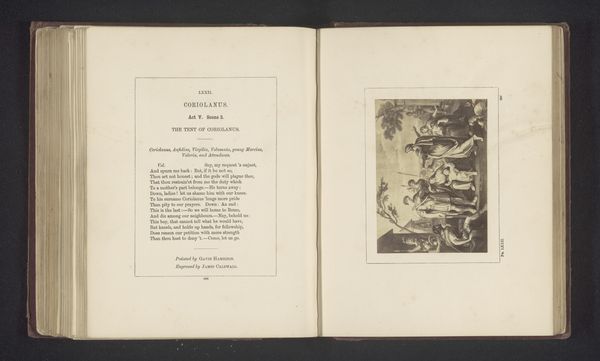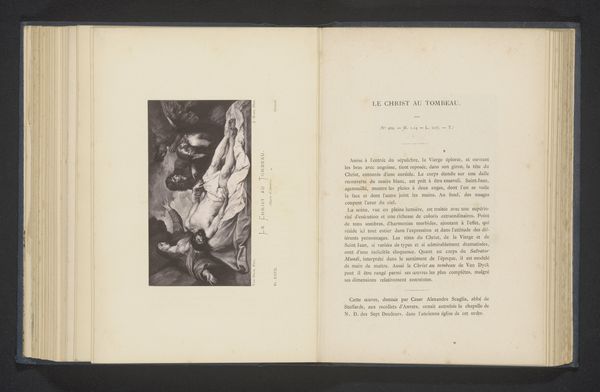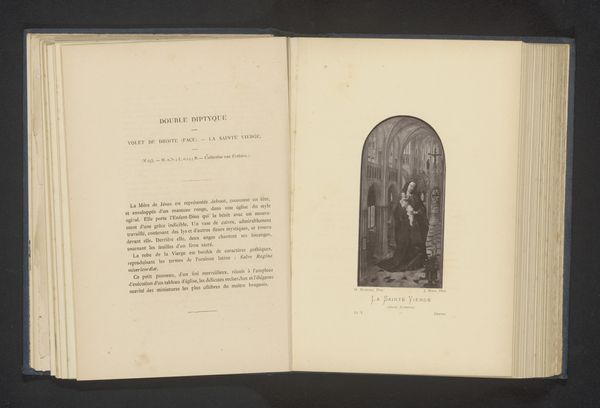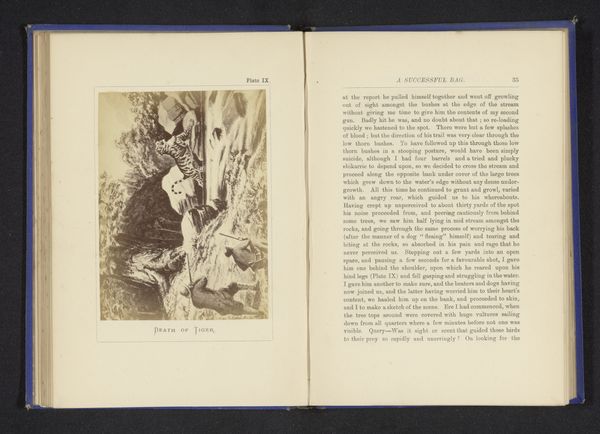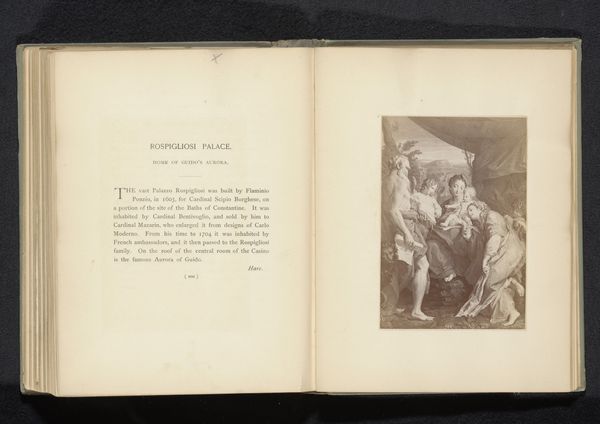
Dimensions: height 115 mm, width 86 mm
Copyright: Rijks Museum: Open Domain
Curator: This engraving, a reproduction of Peter Paul Rubens' "Adoration of the Magi," created before 1877 and printed monochromatically, really makes one consider artistic labor. Editor: I agree. Seeing it here, reduced to a monochrome print, the grandeur of the original painting is almost flattened, making me think about value and accessibility. What strikes you most about it? Curator: It's precisely that translation I find compelling. The act of reproducing Rubens’s opulent Baroque painting through engraving fundamentally alters its meaning. Consider the engraver’s role – Joseph Maes in this case – a skilled laborer painstakingly recrafting Rubens' vision. How does this act of mechanical reproduction democratize art? Or does it dilute its inherent value by commodifying it? Editor: I hadn’t thought about the labor involved in re-creating it like that. So, you’re suggesting that the print transforms the "Adoration," shifting it from a singular, precious object to something more widely available, a manufactured product? Curator: Precisely! The original painting was, in its time, a statement of wealth, status, and the power of the Church, deeply connected to its patronage and exhibition context. Now, how does the relatively mass-produced engraving function within the market of images? Who was its intended audience? Editor: Interesting. It’s almost like this engraving exposes the usually hidden layers of artistic production and consumption, wouldn't you say? Curator: Yes, precisely. Editor: That's a fascinating way to look at it! Curator: Indeed, understanding art through its material existence and its production history unveils compelling socio-economic and political narratives.
Comments
No comments
Be the first to comment and join the conversation on the ultimate creative platform.
